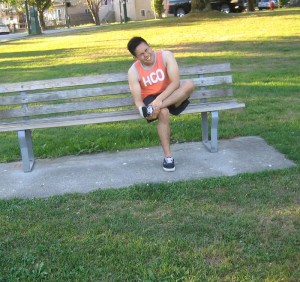There is difficulty moving around with a jammed toe. The toe is swollen, sore and there is limited mobility and can be caused by a minor sprain. The sprain occurs when the toe collides against a hard object while walking barefoot and it can also be a cause of playing sports while landing up in an uncomfortable position after jumping or the foot stubs against another shoe.
Jammed toe is common among people playing soccer, long jump and high jump and can also be caused by dancing but sometimes, toe swelling and pain can be a result of an underlying condition. Conditions such as arthritis and gout can also affect movement of the toes but seek medical help if the toe is fractured or dislocated.
Jammed toe symptoms

A toe is jammed when the ligaments found under the toe is damaged with the following symptoms.
- An agonizing pain can be felt after the toe is sprained. The toe is tender when touched and becomes worse with movement when there is a partial tear in the ligament. With a micro tear, the pain is not constant and happens only when the toe is pressed down.
- When the toe swells, it becomes enlarged and he/she is not capable of wearing shoes.
- The swollen toe is discolored and becomes blue due to the buildup of blood in which it seeps out from the tiny blood vessels that are damaged.
- There is a limited movement of the toe caused by swelling and pain. In case there is dislocation or fracture, it will appear slightly out of its place.
- In conditions such as arthritis and gout, there is pain in other joints, abrupt pain and swelling without any history or trauma.
Treatment and home remedies for a jammed toe
- Make sure that the toe is aligned properly but if a toe is out of alignment it can be a fracture or dislocation. In such cases, it is vital to seek medical care.
- Avoid unnecessary toe movements for a few days by using a splint in order to immobilize the toe.
- Apply an ice pack in order to minimize swelling for 10-15 minutes every hour for the first 5-6 hours then continue this procedure at an interval of every 6 hours for 1-2 days. The application of ice will minimize pain because it numbs the nerves.
- Keep the affected area elevated above the level of the heart from time to time for 1-2 days in order to minimize the swelling as well as reduce the flow of blood to the affected toe.
- Once inflammation and pain is minimized, encourage the individual to engage in some exercises to strengthen the toe and flexibility. A common exercise is flexing and stretching the toes.
If the symptoms of the injury seem to persist, it is best to consult a doctor for proper assessment of the condition since a dislocation or fracture might be present.
